The Haswell Review: Intel Core i7-4770K & i5-4670K Tested
by Anand Lal Shimpi on June 1, 2013 10:00 AM ESTCPU Performance: Five Generations of Intel CPUs Compared
For the purposes of our look at Haswell, we will be breaking up our review coverage into two parts. The rest of this article will focus on the CPU side of Haswell, while coverage of the GPU - including Iris Pro and Crystalwell - has been spun off into another artice: Intel Iris Pro 5200 Graphics Review: Core i7-4950HQ Tested.
The majority of the market doesn’t upgrade annually, so I went back a total of five generations to characterize Haswell’s CPU performance. Everything from a 2.53GHz Core 2 Duo through Nehalem, Sandy Bridge, Ivy Bridge and Haswell are represented here. With the exception of the Core 2 platform, everything else is running at or near the peak launch frequency for the chip.
In general, I saw performance gains over Ivy Bridge of 1 - 19%, with an average improvement of 8.3%. Some of the performance gains were actually quite impressive. The 7.8% increase in Kraken shows there’s still room for improvement in lightly threaded performance, while the double digit FP performance gains in POV-Ray and x264 HD really play to Haswell’s strengths.
Compared to Sandy Bridge, Haswell looks even more impressive. The Core i7-4770K outperforms the i7-2700K by 7 - 26%, with an average performance advantage of 17%. The gains over Sandy Bridge aren’t large enough to make upgrading from a Sandy Bridge i7 to a Haswell i5 worthwhile though, as you still give up a lot if you go from 8 to 4 threads on a quad-core part running heavily threaded workloads.
Compared to Nehalem the gains average almost 44%.
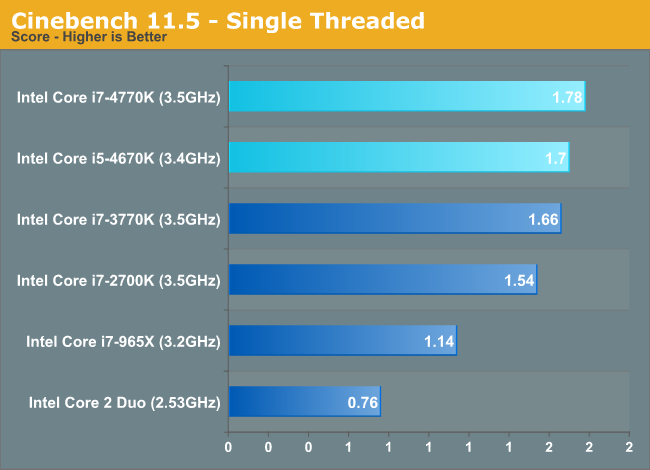


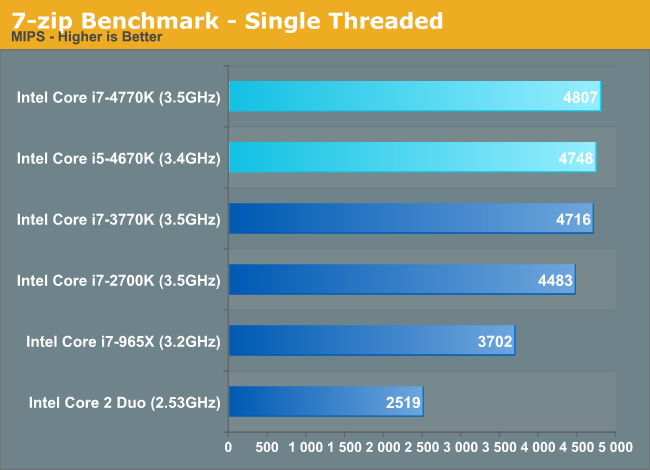
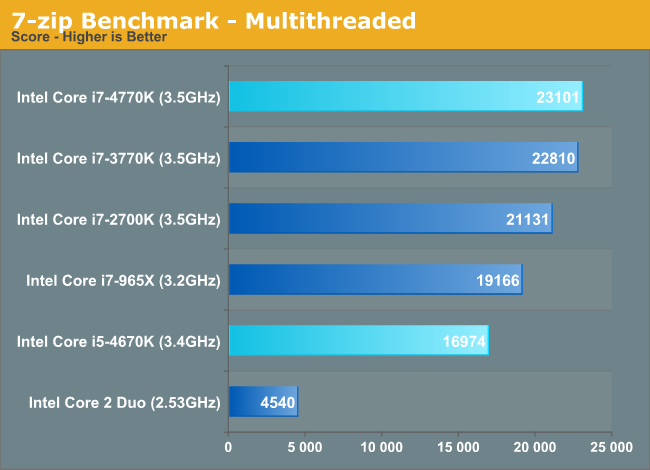
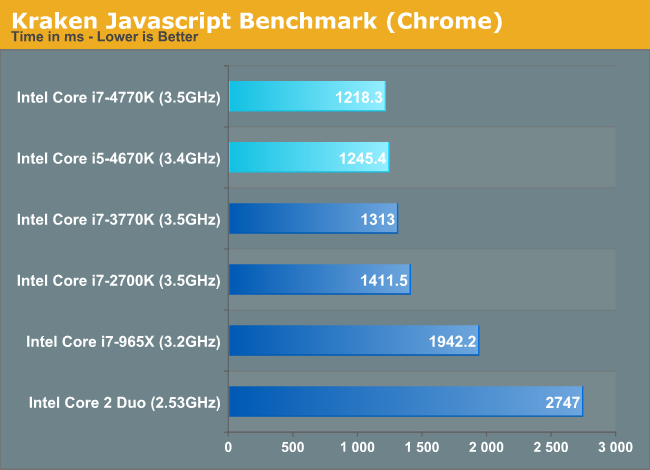
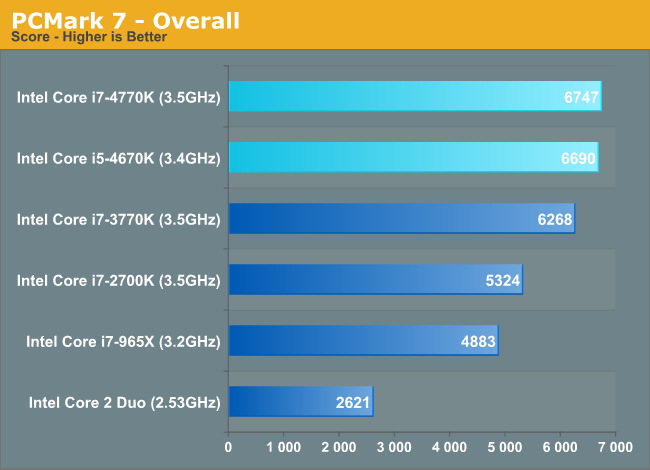
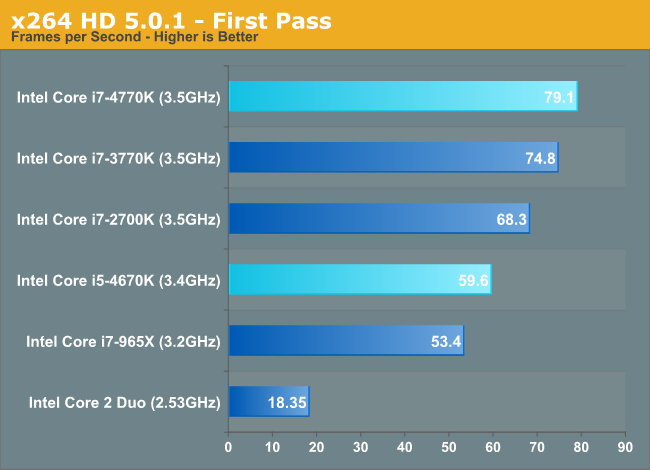
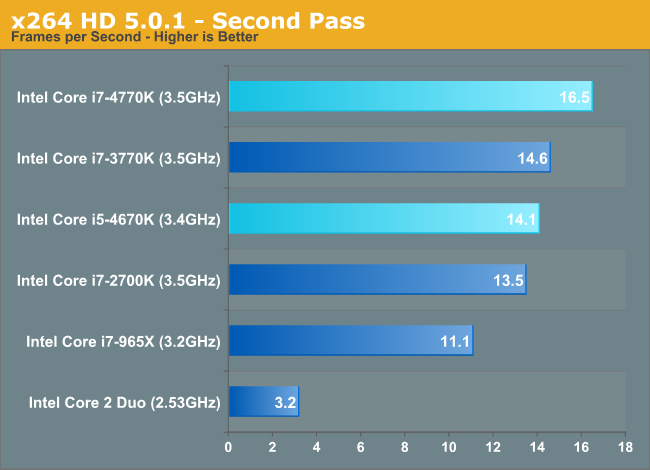
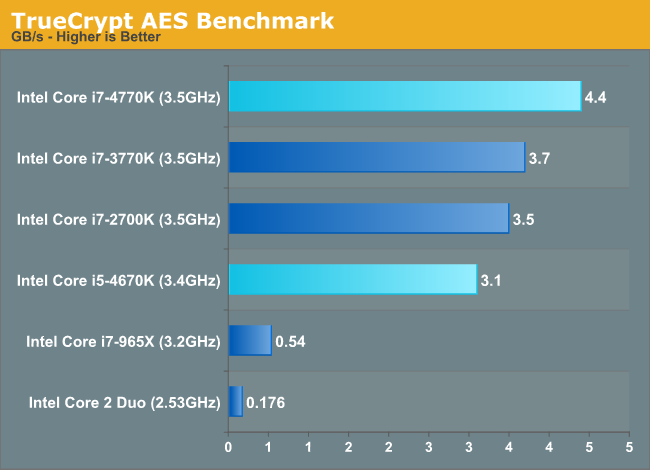

Quite possibly the most surprising was just how consistent (and large) the performance improvements were in our Visual Studio 2012 compile test. With a 15% increase in performance vs. Ivy Bridge at the same frequencies, what we’re looking at here is the perfect example of Haswell’s IPC increases manifesting in a real-world benchmark.
Gaming Performance
After spending far too much time on the Iris Pro test system, I didn’t have a ton of time left over to do a lot of gaming performance testing with Haswell. Luckily Ian had his gaming performance test data already in the engine, so I borrowed a couple of graphs.
As expected, Haswell is incrementally quicker in GPU bound gaming scenarios compared to Ivy Bridge - and most definitely at the top of the charts.
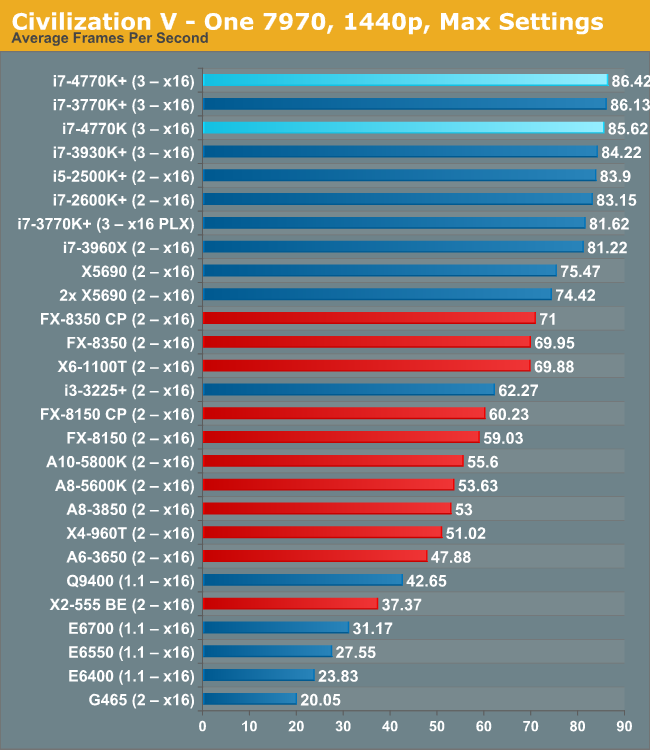











210 Comments
View All Comments
Da W - Saturday, June 1, 2013 - link
It confirms Temash tablets will be the GPU+CPU performace / power / price ratio to beat.takeship - Sunday, June 2, 2013 - link
At 8-15W. What size market is that again? It's like saying Amtrak has a better cost/distance than a Prius. Yes, but so what?Dal Makhani - Saturday, June 1, 2013 - link
its not disappointing at all, its gains, and any gains matter on an annual schedule. As long as it beats Ivy by any percentage, its progress. You know Intel's goals are not IPC related as much as mobile, so dont rant when all the facts are in front of you.peterfares - Saturday, June 1, 2013 - link
You must have missed the part where S0ix isn't available on the desktop parts. How about you wait until the MOBILE and ULV processor tests are in before you start ranting.Jammrock - Saturday, June 1, 2013 - link
The point of Haswell is not to drastically improve performance. Haswell is designed to move x86 into the tablet and mobile market with drastically improved idle and low power performance. Skylake, in roughly 2015, will likely be the next big performance boost.Hector2 - Sunday, June 2, 2013 - link
"Haswell" isn't going into tabletsKlimax - Sunday, June 2, 2013 - link
It does - Surface Pro class.(TDP 10W)thebeastie - Sunday, June 2, 2013 - link
Well I am happy to see the 4th gen release. And yay PCI is now officially gone. Shouldn't there be a memorial ceremony? And maybe a trophy? :)Kudos to the first posters looks like they some what actually read the review, even tho I don't know if I agree with your comments.
klmccaughey - Monday, June 3, 2013 - link
Yes, it is great to see PCI finally dead and buried. It's been a bit like having a tow bar on a ferrari this last few years. Hoorah for the death of PCI!!! :)GullLars - Sunday, June 2, 2013 - link
Where this will probably shine is in mixed workloads. Not overclocking for gaming or production.It will be easier to put Haswell into (G)HTPC builds at mini-ITX and µATX formfactors and keep noise down while still having great burst performance. The 4770K seems to be not worth it for overclockers that have got good Sandy/Ivy chips.
I think i may upgrade my parents living room PC to something like a mini-ITX build with i3-42xxT, and just transfer the SSD (Force GT 120GB) and RAM (8GB 1600 SO-DIMM). It should be a substantial upgrade from E-350 and almost fit the same power envelope for their use cases.
I'm looking more forward to more info on Ivy-E. I'm happy with my 3930K with a decent OC, but if Ivy-E can bring the power/performance ratio down without bringing performance down or heat issues, i might upgrade :)